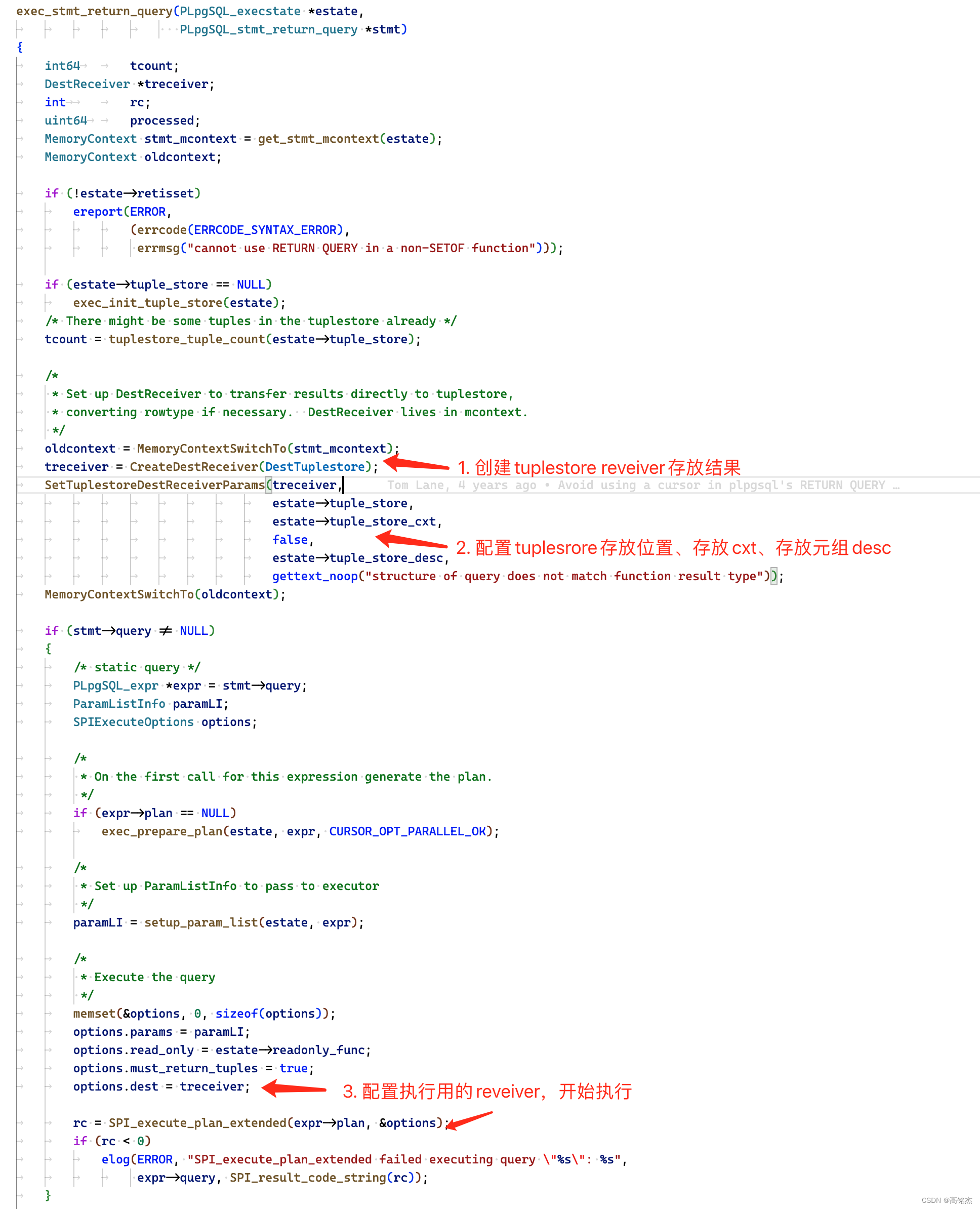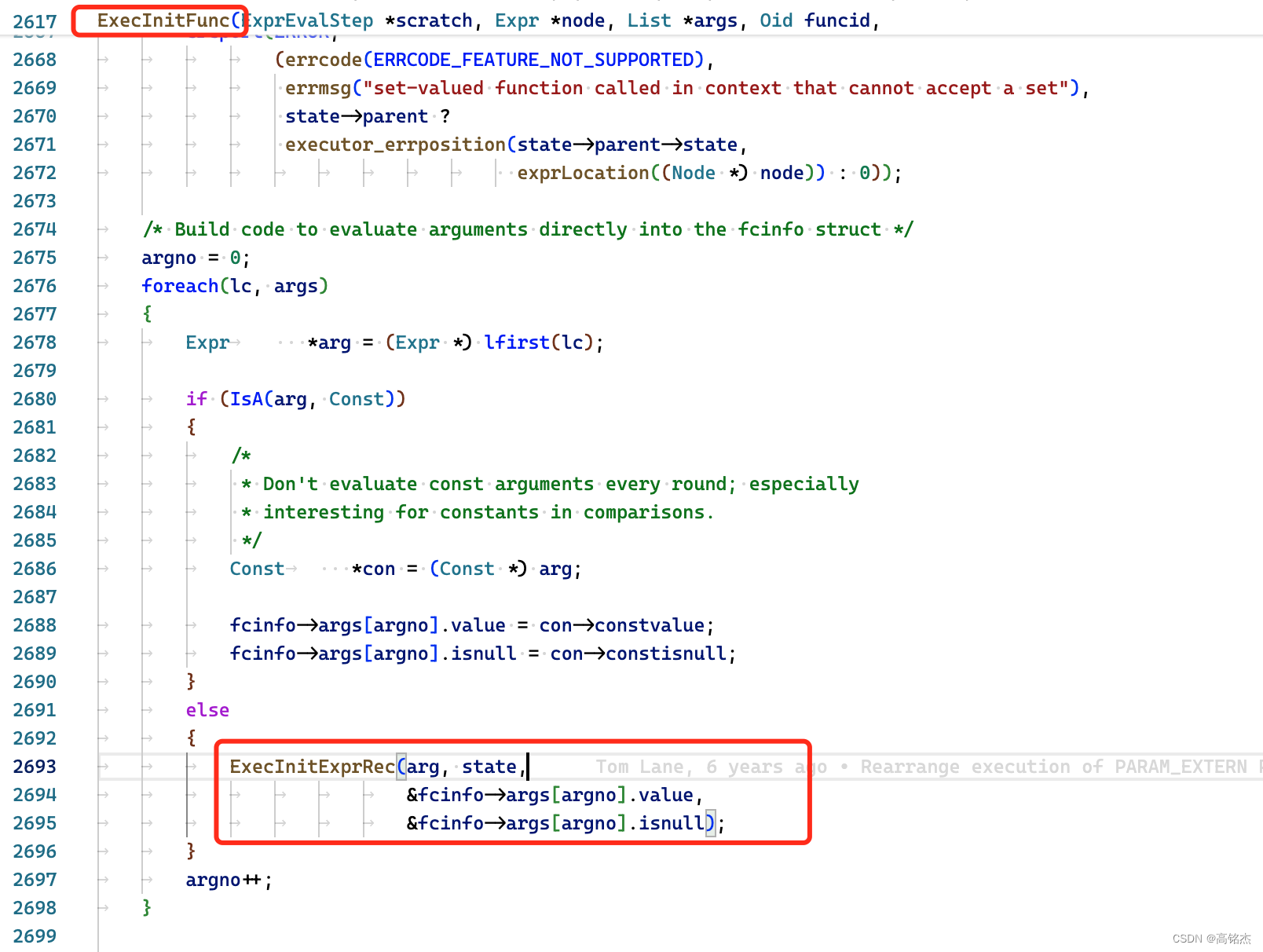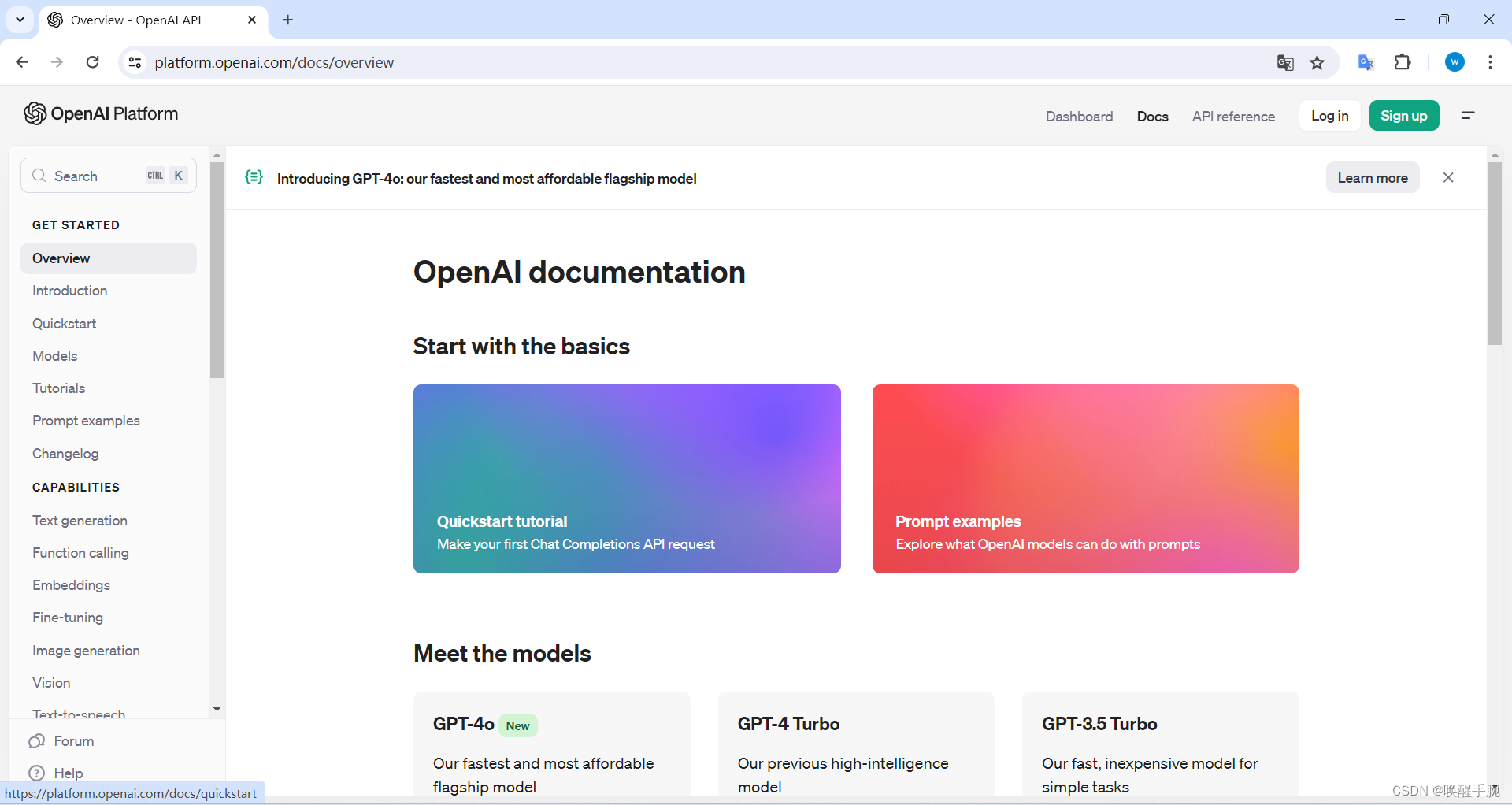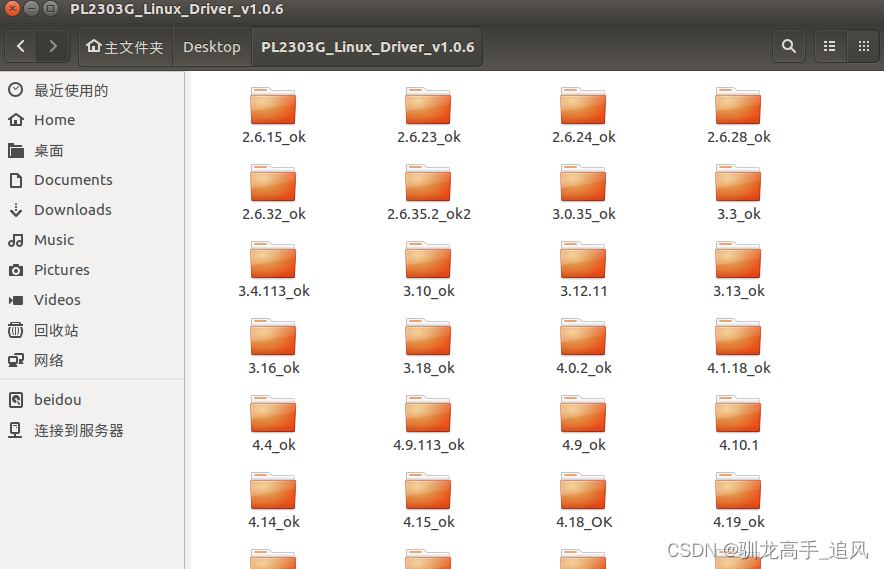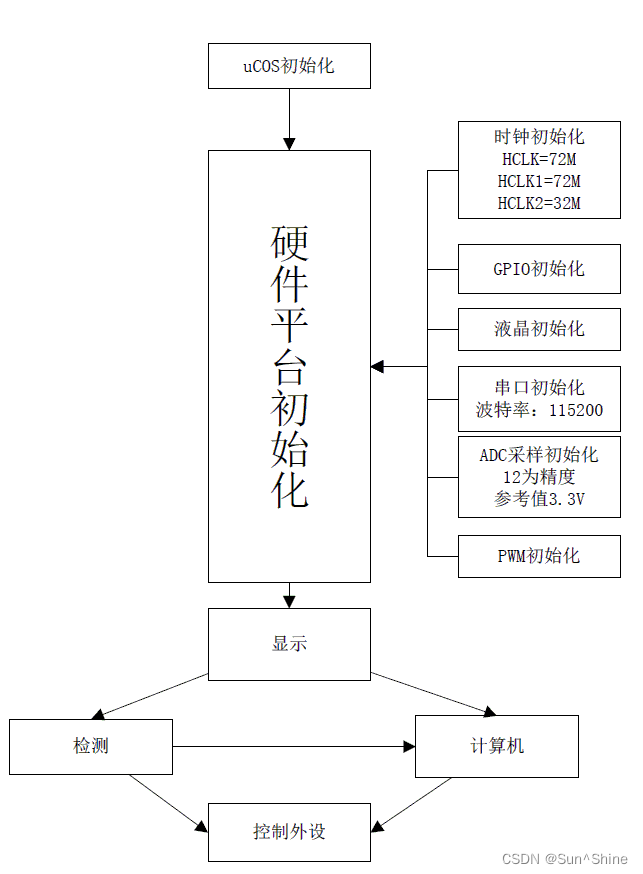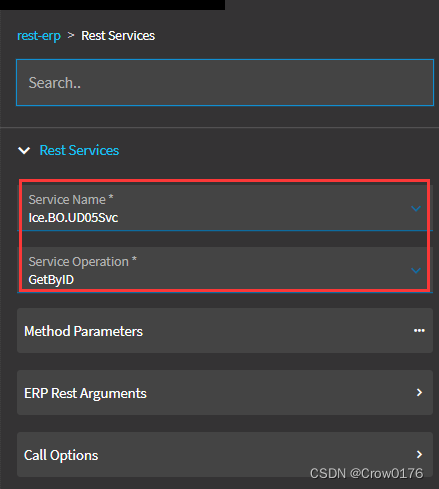这里,我们分析一下顺序扫描的过程,以最简单的select * from t1;语句为例,分析一下查询的过程。
postgres@postgres=# \d t1;
Table "public.t1"
Column | Type | Collation | Nullable | Default
--------+---------+-----------+----------+---------
a | integer | | not null |
b | integer | | |
Indexes:
"t1_pkey" PRIMARY KEY, btree (a)
-- 顺序扫描
postgres@postgres=# explain select * from t1;
QUERY PLAN
------------------------------------------------------
Seq Scan on t1 (cost=0.00..15.00 rows=1000 width=8)
(1 row)
语法解析以及语义分析
这部分前面已有分析过,这里简要描述:
解析层面流程如下:
exec_simple_query
--> pg_parse_query // 生成抽象语法树
--> raw_parser
--> base_yyparse
--> pg_analyze_and_rewrite // 语义分析,转为查询树Query
语法表示可查看gram.y中的定义。
simple_select:
SELECT opt_all_clause opt_target_list // select *
into_clause from_clause where_clause // from t1;
group_clause having_clause window_clause
{
SelectStmt *n = makeNode(SelectStmt);
// ......
$$ = (Node *)n;
}
from_clause:
FROM from_list { $$ = $2; }
| /*EMPTY*/ { $$ = NIL; }
;
from_list:
table_ref { $$ = list_make1($1); }
| from_list ',' table_ref { $$ = lappend($1, $3); }
;
table_ref: relation_expr opt_alias_clause
{
$1->alias = $2;
$$ = (Node *) $1;
}
关键数据结构:
// select语句的抽象语法树表示
typedef struct SelectStmt
{
NodeTag type;
// 对应select *
List *targetList; /* the target list (of ResTarget) */
// 对应 from t1
List *fromClause; /* the FROM clause */ // 保存RangeVar节点
// ......
} SelectStmt;
/*
* RangeVar - range variable, used in FROM clauses
*
* Also used to represent table names in utility statements; there, the alias
* field is not used, and inh tells whether to apply the operation
* recursively to child tables. In some contexts it is also useful to carry
* a TEMP table indication here.
*/
typedef struct RangeVar
{
NodeTag type;
char *catalogname; /* the catalog (database) name, or NULL */
char *schemaname; /* the schema name, or NULL */
char *relname; /* the relation/sequence name */
bool inh; /* expand rel by inheritance? recursively act
* on children? */
char relpersistence; /* see RELPERSISTENCE_* in pg_class.h */
Alias *alias; /* table alias & optional column aliases */
int location; /* token location, or -1 if unknown */
} RangeVar; // 存储表的所在库名,模式名,表名信息
语义分析流程:
```c
pg_analyze_and_rewrite // 语义分析,生成查询树Query
--> pg_analyze
--> transformStmt
--> transformSelectStmt
--> transformFromClause // 处理表, 将RangeVar转为RangeTblEntry
--> transformFromClauseItem
--> transformTableEntry
--> transformTargetList // 处理 * ,展开为a, b
--> pg_rewrite_query
查询优化
主要是生成执行计划,前面已经通过EXPLAIN命令得知其执行计划为顺序扫描,让我们具体看一下其是如何生成的。
pg_plan_queries
--> pg_plan_query
--> planner
--> standard_planner
--> subquery_planner
--> grouping_planner
--> query_planner // Generate a path (that is, a simplified plan) for a basic query
--> setup_simple_rel_arrays
--> add_base_rels_to_query
--> build_simple_rel
--> make_one_rel // Finds all possible access paths for executing a query
--> set_base_rel_sizes
--> set_rel_size
--> set_plain_rel_size
--> set_baserel_size_estimates // 选择率计算,计算代价Cost要用
--> set_base_rel_pathlists
--> set_rel_pathlist // Build access paths for a base relation
--> set_values_pathlist
--> create_seqscan_path // 生成顺序扫描路径
--> make_rel_from_joinlist
--> apply_scanjoin_target_to_paths
--> create_plan
--> create_scan_plan
--> create_seqscan_pla
这里有个函数要重点说明一下,在涉及多表路径规划时,单表路径是最基础的,单表路径可以是顺序扫描、索引扫描、TID扫描等,这个是最底层的。
/* Build access paths for a plain relation (no subquery, no inheritance) */
void set_plain_rel_pathlist(PlannerInfo *root, RelOptInfo *rel, RangeTblEntry *rte)
{
Relids required_outer;
/* We don't support pushing join clauses into the quals of a seqscan, but
* it could still have required parameterization due to LATERAL refs in its tlist. */
required_outer = rel->lateral_relids;
/* Consider sequential scan */
add_path(rel, create_seqscan_path(root, rel, required_outer, 0)); // 顺序扫描
/* If appropriate, consider parallel sequential scan */
if (rel->consider_parallel && required_outer == NULL) // 尝试并行顺序扫描
create_plain_partial_paths(root, rel);
/* Consider index scans */
create_index_paths(root, rel); // 索引扫描
/* Consider TID scans */
create_tidscan_paths(root, rel); // TID扫描
}
最后由最佳路径Path生成顺序扫描执行计划SeqScan:
/* ==========
* Scan nodes
* ========== */
typedef struct Scan
{
Plan plan;
// 指明扫描那个表,
Index scanrelid; /* relid is index into the range table */
} Scan;
/* ----------------
* sequential scan node
* ---------------- */
typedef Scan SeqScan;
执行器
输入执行计划,输出最终结果。执行顺序扫描。
主流程
PortalStart
--> ExecutorStart
--> InitPlan
--> ExecInitSeqScan
PortalRun
--> ExecutorRun
--> ExecutePlan
--> ExecSeqScan
--> ExecScan
--> ExecScanFetch
--> SeqNext
--> table_beginscan // 表扫描函数scan_begin
--> heap_beginscan // 堆表beginscan
--> initscan
--> table_scan_getnextslot
--> heap_getnextslot
--> heapgettup_pagemode
--> heapgetpage
--> ReadBuffer_common
--> ExecStoreBufferHeapTuple
--> tts_buffer_heap_store_tuple
PortalDrop
具体实现代码如下:
/* ----------------------------------------------------------------
* ExecSeqScan(node)
*
* Scans the relation sequentially and returns the next qualifying
* tuple.
* We call the ExecScan() routine and pass it the appropriate
* access method functions.
* ---------------------------------------------------------------- */
static TupleTableSlot *
ExecSeqScan(PlanState *pstate)
{
SeqScanState *node = castNode(SeqScanState, pstate);
return ExecScan(&node->ss,
(ExecScanAccessMtd) SeqNext,
(ExecScanRecheckMtd) SeqRecheck);
}
/*
* ExecScanFetch -- check interrupts & fetch next potential tuple
*
* This routine is concerned with substituting a test tuple if we are
* inside an EvalPlanQual recheck. If we aren't, just execute
* the access method's next-tuple routine.
*/
static inline TupleTableSlot *ExecScanFetch(ScanState *node, ExecScanAccessMtd accessMtd, ExecScanRecheckMtd recheckMtd)
{
EState *estate = node->ps.state;
if (estate->es_epq_active != NULL)
{
// ...
}
/* Run the node-type-specific access method function to get the next tuple */
return (*accessMtd) (node);
}
/* ----------------------------------------------------------------
* SeqNext
*
* This is a workhorse for ExecSeqScan
* ----------------------------------------------------------------*/
static TupleTableSlot *SeqNext(SeqScanState *node)
{
TableScanDesc scandesc;
EState *estate;
ScanDirection direction;
TupleTableSlot *slot;
/* get information from the estate and scan state */
scandesc = node->ss.ss_currentScanDesc;
estate = node->ss.ps.state;
direction = estate->es_direction;
slot = node->ss.ss_ScanTupleSlot;
if (scandesc == NULL)
{
/* We reach here if the scan is not parallel, or if we're serially
* executing a scan that was planned to be parallel. */
scandesc = table_beginscan(node->ss.ss_currentRelation, estate->es_snapshot, 0, NULL);
node->ss.ss_currentScanDesc = scandesc;
}
/* get the next tuple from the table */
if (table_scan_getnextslot(scandesc, direction, slot))
return slot;
return NULL;
}
/*
* Return next tuple from `scan`, store in slot.
*/
static inline bool
table_scan_getnextslot(TableScanDesc sscan, ScanDirection direction, TupleTableSlot *slot)
{
slot->tts_tableOid = RelationGetRelid(sscan->rs_rd);
return sscan->rs_rd->rd_tableam->scan_getnextslot(sscan, direction, slot); // heap_getnextslot
}
堆表扫描
我们知道在PG中,表的存储是被切成很多页(也可以叫区块)的,默认是8k的大小(引申问题:为什么是8k呢?这个页的大小涉及到性能,涉及到很多方面,比如VM,FSM,页缓存,磁盘读取等)。全表扫描就是从表的第0块开始,一直扫描到最后一块。扫描的时候,先指定要扫描的块号,查找块是否在缓冲区中,如果不在缓冲区中,则从磁盘读取该表指定的块到缓存区中。块扫描完成后,加1,继续扫描下一个块,直到扫描结束。如果表很大,缓冲区不能完全缓冲,则会依据时钟扫描算法,选择淘汰掉某些块。
/*
* Descriptor for heap table scans.
*/
typedef struct HeapScanDescData
{
TableScanDescData rs_base; /* AM independent part of the descriptor */
/* state set up at initscan time */
BlockNumber rs_nblocks; /* total number of blocks in rel */
BlockNumber rs_startblock; /* block # to start at */
BlockNumber rs_numblocks; /* max number of blocks to scan */
/* rs_numblocks is usually InvalidBlockNumber, meaning "scan whole rel" */
/* scan current state */
bool rs_inited; /* false = scan not init'd yet */
BlockNumber rs_cblock; /* current block # in scan, if any */
Buffer rs_cbuf; /* current buffer in scan, if any */
/* NB: if rs_cbuf is not InvalidBuffer, we hold a pin on that buffer */
/* rs_numblocks is usually InvalidBlockNumber, meaning "scan whole rel" */
BufferAccessStrategy rs_strategy; /* access strategy for reads */
HeapTupleData rs_ctup; /* current tuple in scan, if any */
/* these fields only used in page-at-a-time mode and for bitmap scans */
int rs_cindex; /* current tuple's index in vistuples */
int rs_ntuples; /* number of visible tuples on page */
OffsetNumber rs_vistuples[MaxHeapTuplesPerPage]; /* their offsets */
} HeapScanDescData;
typedef struct HeapScanDescData *HeapScanDesc;
更详细的代码要阅读heapam.c中的实现。
/*
* IDENTIFICATION
* src/backend/access/heap/heapam.c
*
* INTERFACE ROUTINES
* heap_beginscan - begin relation scan
* heap_rescan - restart a relation scan
* heap_endscan - end relation scan
* heap_getnext - retrieve next tuple in scan
* heap_fetch - retrieve tuple with given tid
* heap_insert - insert tuple into a relation
* heap_multi_insert - insert multiple tuples into a relation
* heap_delete - delete a tuple from a relation
* heap_update - replace a tuple in a relation with another tuple
*/
bool
heap_getnextslot(TableScanDesc sscan, ScanDirection direction, TupleTableSlot *slot)
{
HeapScanDesc scan = (HeapScanDesc) sscan;
/* Note: no locking manipulations needed */
if (sscan->rs_flags & SO_ALLOW_PAGEMODE)
heapgettup_pagemode(scan, direction, sscan->rs_nkeys, sscan->rs_key);
else
heapgettup(scan, direction, sscan->rs_nkeys, sscan->rs_key);
if (scan->rs_ctup.t_data == NULL)
{
ExecClearTuple(slot);
return false;
}
/*
* if we get here it means we have a new current scan tuple, so point to
* the proper return buffer and return the tuple.
*/
pgstat_count_heap_getnext(scan->rs_base.rs_rd);
ExecStoreBufferHeapTuple(&scan->rs_ctup, slot,
scan->rs_cbuf);
return true;
}

